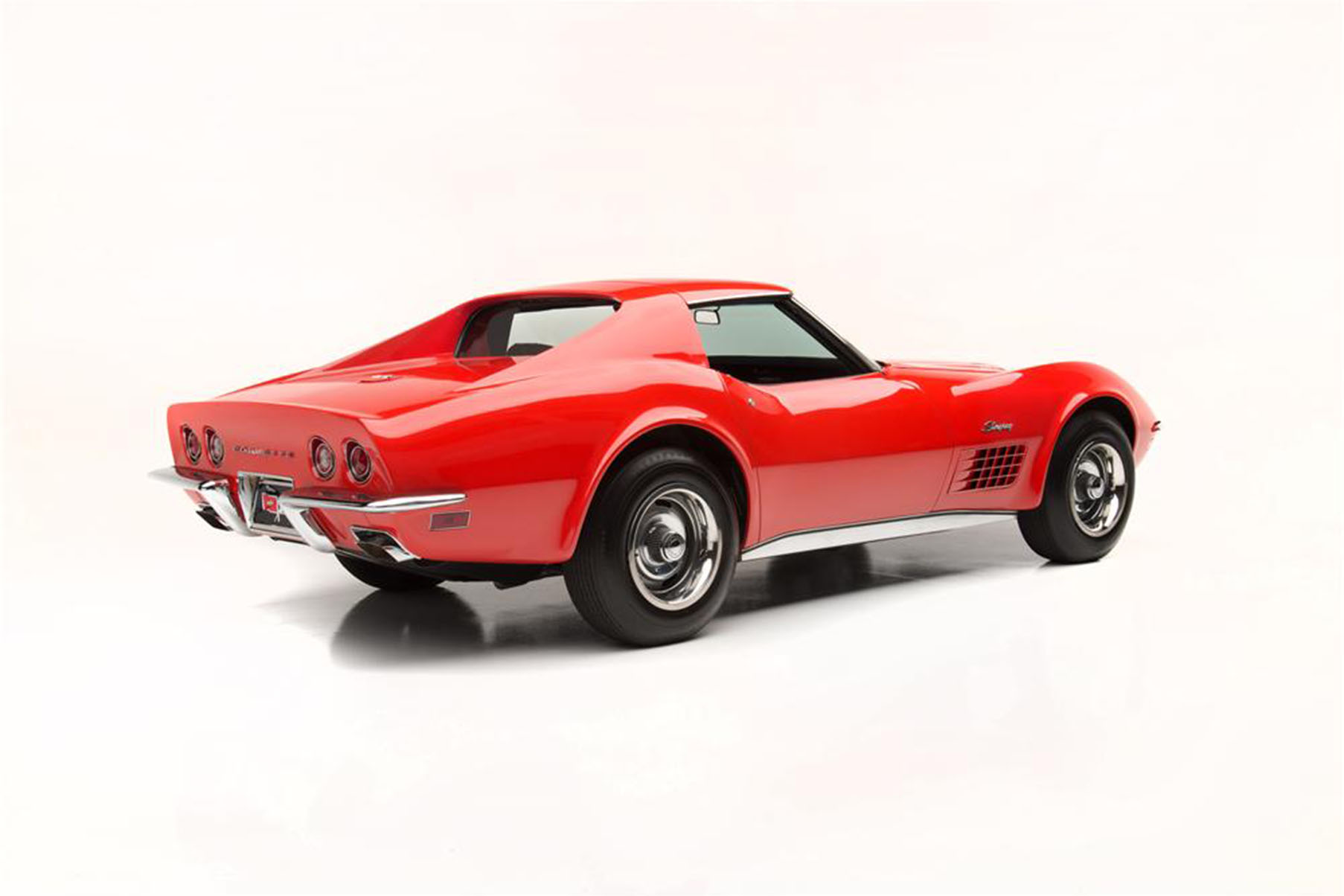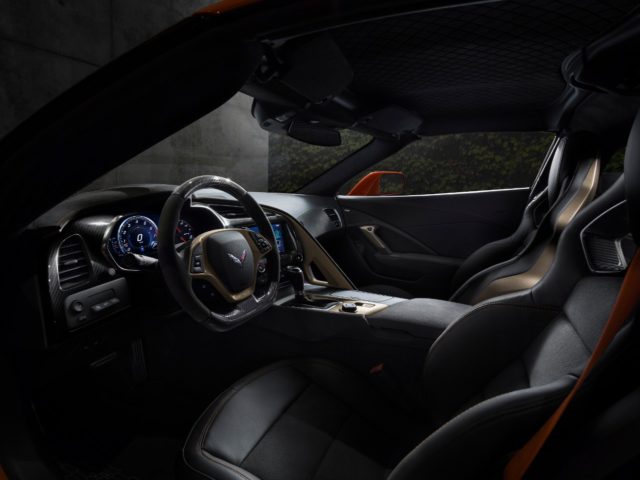
The 2019 Corvette ZR1. 755hp, 0-60 in less than 3 seconds, over 200mph top speed. Getting here took decades and all the tech Chevy could muster. Let’s take a look back.
Now that the 2019 ZR1 has debuted and put the automotive world on it’s ear, lets take a look back at the history of range-topping Corvettes and refresh our memory on how we got to the latest super Chevy two-seater.
Let’s turn back the clock to the late sixties when Zora Arkus-Duntov still had the reigns of Corvette firmly in hand, and the gas crisis, insurance Nazis and safety bumpers were a small blip on the horizon.
Though it’s place in the Corvette hierarchy was slightly muddled when it debuted in 1970 – as the extremely rare and even more potent ZR2 would follow a year later – one thing has always been certain about the ZR1 (or ZR-1, as it was known during the C4 era): this badge stands for serious Corvette performance. Thus far we’ve seen three different eras of ZR1 performance, and signs point to a fourth which may be formally announced any day now.
Each of these iterations has had a slightly different strategy to put the Corvette at the top of the domestic performance food chain, and overall mission of the package has evolved over time in turn. Here we’ll look back at how the ZR1 has served to elevate Corvette performance over the decades and where we expect it to go next.
1970 Corvette ZR1

The LT5 was supposed to debut alongside the 454ci LS7 big block, but that motor never found its way into a production car, leaving the LT1 to be the only motor associated with the ZR1 option package when it debuted on the C3 Corvette in 1970. Image: Barrett-Jackson
While GM’s big block mills were churning out insane horsepower by 1970, it was the debut of a small block power plant that would capture the attention of Corvette enthusiasts looking for the pinnacle of road course prowess. Factory rated at 370 horsepower, the LT-1 was a 350-cube, high-revving small block screamer which boasted a forged steel crankshaft, four-bolt main block, solid lifters, a high-lift camshaft and other requisite go-fast goodies.
Outfitted with 11:1 compression and a 780 CFM Holley four-barrel carburetor mounted atop a unique aluminum intake manifold, the LT-1 was scheduled to debut alongside the LS7 454, the latter of which would represent the ultimate in big block Chevy performance and therefore sit at the top of the Corvette performance totem pole, but production issues would result in the LT-1 getting the stage all to itself for 1970.
Externally it's almost impossible to tell a C3 ZR1 from a standard 1970 Stingray - this package was all business, focusing sheerly on performance without any consideration for aesthetic upgrades. GM's expectation was that these cars would be put into competition use, so the ZR1 could not be ordered with creature comforts like power windows, power steering, air conditioning, and a radio, which is likely what kept most customers who planned to daily drive their Corvettes from opting for the package. Images: Barrett-Jackson
It would also be the sole engine choice for the new ZR1. Designed for road racers and road-going enthusiasts looking for uncompromising capability, the package included a host of road racing-spec equipment pulled from the L88 parts bin, including the M22 “Rock Crusher” close-ratio four-speed, the J56 heavy-duty brake package, the F41 suspension package and an uprated cooling system that consisted of a bigger aluminum radiator and an expansion tank.
As with the L88 and other hardcore performance packages before it, the ZR1 would prove to be rarely chosen on the options sheet, with just 25 examples built in 1970 and even fewer over the next two years after. Still, it left an indelible mark on Corvette fanatics that wasn’t lost on the brass at General Motors.
1990 Corvette ZR-1
When the fourth generation Corvette debuted in 1984 it marked a turning point for Corvette. With performance choked into oblivion throughout the mid-70s and early 1980s, Chevrolet’s clean-sheet approach with the C4 was a breath of fresh air to enthusiasts who’d be longing for a truly compelling and modern American sports car.
But high performance wasn’t out of the woods just yet, as evidenced by the 200 horsepower 350ci L83 V8 equipped to the all-new Vette when it debuted. However, a few years later GM would acquire the English sports car firm Lotus, and it wouldn’t be long before Chevrolet and Lotus engineers would embark on a joint project to create the pinnacle of Corvette performance.
Like the C3 ZR1, there wasn't a lot of tip off onlookers that the ZR-1 wasn't a garden-variety Corvette from a glance, especially during the first few years of production. But also like the C3, the C4 ZR-1 had it where it counted. Under the hood was a Lotus-developed dual-overhead cam V8 which cranked out 375 horsepower and 370 pound-feet of torque when it debuted - truly remarkable numbers in 1990.
Though the C4 ZR-1 differed little from the standard Corvette aesthetically, underneath the bodywork was thoroughly world-class sports car that was purpose-built to put the world’s most capable road-going vehicles on notice for a fraction of the price.
During a time when automakers were still struggling to bring horsepower back to the masses, GM knew that the engine motivating the new ZR-1 would serve as the centerpiece of the package. So, rather than extensively modifying the standard 350ci motor that powered the C4 Corvette at the time, Lotus engineers tossed the 240 horsepower L98 V8 and began work on an all-new motor that would later be dubbed the LT5.
A decidedly more sophisticated design than the cam-in-block configuration of the L98, this new all-aluminum, 32 valve mill boasted four overhead camshafts and featured a unique air management system that could shut off or engage some of the motor’s intake runners and fuel injectors, therefore allowing the motor to stay in compliance with government fuel economy standards while churning out unheard of performance for the era.
Packing 375 horsepower and 370 pound-feet of torque when it debuted in 1990, the LT5’s design differed so dramatically from the L98’s that Chevrolet would outsource the assembly of the engine to Mercury Marine in Stillwater, Oklahoma, who would then ship the motors to GM’s Bowling Green, Kentucky factory for final installation.
To keep the rest of the car balanced with the newfound grunt, the team also worked with Bilstein to design a new adjustable active suspension system. Unique steering and braking systems were also developed specifically for the new model, and the rear track was widened by three inches in order to accommodate wider rubber so the ZR-1 could put the power to the ground.

By the time the last C4 ZR-1 rolled off the assembly line in 1995, the model was more easily distinguished from the standard Corvette due to the fact that it now sported a unique set of wheels. It was still a bit of a wolf in sheep’s clothing though, and revisions to the LT5 in 1993 meant that the car was dishing out 405 hp by the time production ended.
With a 0-60 mph sprint in 4.4 seconds on its way to a top speed of over 180 miles per hour, the ZR-1 would end up setting seven FIA-verified high-speed endurance world records at a test track in Fort Stockton, Texas on March 1, 1990. By the end of the ZR-1’s six-year production run the model was better than ever, dishing out 405 horsepower by way of further engine revisions applied in 1993, and nearly 7000 examples of the car were produced in total.
Car and Driver famously coined the nickname for this beast, “The Corvette From Hell”
2009 Corvette ZR1
After a hiatus that lasted nearly a decade and a half the ZR1 moniker returned to the fold. Now applied to the C6 platform, a chassis that had already proven to be a world-class performer in Z06 guise, the ZR1 would once again serve as the apex of Corvette performance.
Unlike previous ZR1s, the C6 iteration made no attempt to be visually subtle, and could be instantly recognized from both standard Corvettes and Z06 models by way of the aggressive bodywork, unique wheels, hunkered down stance, and the hood, the latter of which featured a polycarbonate window that offered a view of the engine's intercooler.
More visually extroverted than ZR1 treatments had been in the past, the new “King of the Hill” Corvette boasted a unique body kit, wheels, and a hood with a clear center section that allowed curious parties to see the boosted V8 power plant installed between the frame rails. That motor was revealed to be the most powerful automotive production engine General Motors had ever offered in the company’s history when it debuted: a supercharged, 638 horsepower 6.2-liter monster dubbed the LS9.

With 638 horsepower on tap, the C6 ZR1 could make short work of the rear tires when laying into the throttle. But it was far from a mere muscle car – Chevrolet built the car to dominate at the road course rather than the drag strip.
As with previous iterations of the ZR1, the C6 model would receive a host of performance upgrades above and beyond the Z06, including a ZR1-specific Magnetic Ride Control suspension system and massive carbon ceramic brakes, along with a hood, roof, fenders, front splitter, and rocker moldings made of carbon fiber.
The C6 Corvette ZR1 would go on to prove its world-class performance when it captured production car lap record around Germany’s Nurhburgring road course in 2008 with a time of seven minutes and 26.4 seconds. It was a figure the Corvette team would improve upon with a 7:19.63 elapsed time when they returned to the famed German race track in 2012 using a car outfitted with the then-new Michelin Pilot Sport Cup tires.
2019 C7 ZR1
The new ZR1 held many surprises. Instead of a DOHC motor it debuted with a large displacement 6.2 liter, pushrod V8 with 755hp and 715 lb-ft of torque.
The new era LT5 delivers the highest output ever for a Chevrolet production vehicle, thanks in part to a new, more-efficient intercooled supercharger system that offers 52 percent more displacement than the Z06’s LT4 supercharger. GM’s first dual-fuel-injection system, which employs primary direct injection and supplemental port injection, helps the LT5 achieve its record output.
Available with either a seven-speed manual or an eight speed automatic, the car is packed with aero enhancements and fresh styling from the A-pillar forward.
An all-new front fascia is designed to channel air for propulsion-system and drivetrain cooling, with four new radiators bringing the heat-exchanger total to 13. A special carbon-fiber “halo” hood is open in the middle to clear the LT5 engine’s supercharger/intercooler assembly. Additional features, including aero packages with stanchion-mounted wings, help push the ZR1 harder onto the track for more confident handling and faster lap times. Top speed of the ZR1 is over 210 mph.
The ZR1 will offer two aero packages: a standard rear Low Wing, which delivers the highest top speed and helps generate up to 70 percent more downforce than the Z06’s base aero package, and an available two-way-adjustable High Wing that offers maximum downforce on the track for the quickest lap times — about 60 percent more downforce than the Z06 with the available Z07 Performance Package. All models also feature a Chevrolet-first, downforce-enhancing front underwing.
The adjustable High Wing is part of the new ZTK Performance Package, which also includes a front splitter with carbon-fiber end caps, Michelin Pilot Sport Cup 2 summer-only tires, and specific chassis and Magnetic Ride Control tuning for greater cornering grip.
The car will easily pass the six-figure mark and should be available by summer 2018.
Stay tuned to Corvette Online for all the updates.



































